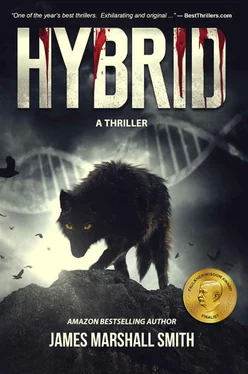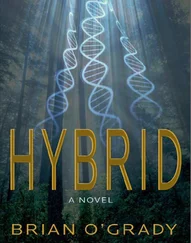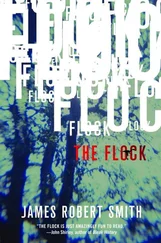On one photograph with a dead calf he pointed to a spot near the open neck wound. “We saw this bite pattern on several victims. In five cases, we took caliper measurements of the distance between the tips of the long cuspids… the fangs, if you will. They were all approaching three inches.”
“And if you’re dealing with a member of the dog family,” Professor Hornsby broke in, “it had to be one of unbelievable size.”
Greta McFarland spoke up. “I wonder if we could cut to the chase. We’re talking about Yellowstone wilderness. So isn’t this a no-brainer? The park’s known for its Grizzly population. Now we have wolves. It seems an open-and-shut case of one or the other.”
“The Grizzly leaves unmistakable tracks and scat,” Dr. Wallace replied. “And I’ve been told that only four grizzly killings occurred in Yellowstone the last twenty years.”
“So that leaves wolves, right?” McFarland said. “I would guess they’re attacking—for whatever reasons—anything that’s easy picking, like sheep and cattle on ranches around the boundary. Maybe even someone who drifted alone into their territory. So, you capture the wolves and take them back to Canada. It seems our experiment with wolf restoration in Yellowstone didn’t work out.”
“Wait a minute, Greta,” Corey broke in. His face was flushed. “Don’t jump ahead so fast. We haven’t determined yet that wolves are responsible for any of this.”
Montgomery knew what his boss was thinking. She couldn’t recognize a wolf if it came up and bit her on the ass. Corey was searching for the right words to respond to someone he considered an idiot.
“Miss McFarland,” Wallace said, “in my twenty-six years in this business, I’ve never known an animal attacking with the kind of ferocity we see here.”
“If I might make a point,” Professor Hornsby said. “The wild dogs of the Serengeti can even be more ferocious than wolves. They’ve been known to disembowel prey on the run.”
Corey glanced at Montgomery and rolled his eyes.
Dr. Wallace peered over the top of his rimless glasses and slid another photo across the table. “Here’s a forepaw print. It was found fresh near the body of the photographer. For perspective, note the flashlight next to the track.”
Professor Hornsby reached for the photograph and held it close to his nose, squinting. “My God,” he muttered.
“That,” Wallace said, “is a classic print for the North American gray wolf. But look closely at the paw print.”
Corey sat slouched in his chair, both feet stretched out under the table. He tapped the fingertips of each hand together in front of his face. “How can you be sure those aren’t cougar tracks?” he asked.
“Good question,” Dr. Wallace replied. “The primary difference between cougar and wolf tracks are the claw marks. The cougar’s print rarely shows any claws. Like all cats, they retract. But what strikes us about this track is that the paw is actually larger than my hand.”
“I’m puzzled,” interrupted Professor Hornsby. “The largest wolves in North America have paws half that size and they’re males in the one hundred thirty pound range.”
“No doubt about it,” Wallace said, “these paw prints are the largest I’ve ever encountered by a long shot.”
“But they suggest a wolf of perhaps—”
“More than two hundred pounds.”
“I’m sorry,” Hornsby said. “That’s not possible.” He sat back confidently in his chair.
“But that’s not all we have, Professor,” Wallace replied. “To back up our observations, we examined further the tracks near the photographer’s body. The animal was on the run—attacking. We set white markers square in the middle of each track and measured the distances between them.”
Dr. Wallace focused on those around the table, one by one, as he spoke. “We compared the stride measurements of this animal—we’re confident now it’s a wolf—with others in the data base. The wolf has to be at least six feet nine inches long, not counting the tail.” He stopped, allowing the weight of his words to sink in.
Professor Hornsby wrinkled his brow. “I suppose if you have a wolf tipping the scales at two hundred pounds, approaching seven feet from head to flank makes sense. But the question I would ask is, how on God’s green earth could a wolf get that big?”
“I believe the greater question,” McFarland said, “is why would a lone wolf attack and kill a human. Everything I’ve learned tells me they don’t do that. I can understand the livestock deaths, but even then, don’t those attacks come from a pack?”
“Livestock kills usually take place in packs,” Hornsby replied. “But not always. A stray sometimes leaves the pack on its own. Because the loner can’t get meat from pack hunts, he has to provide for himself.”
He bathed in the rapt attention. “To your second point, wolf attacks on people are rare, but they do happen. About a half a dozen have been confirmed in North America this century.” He placed his eyeglasses and then his elbows on the table. “But most troublesome are the unofficial reports from India. In some of the rural areas, wolves have devoured children. They’re three- to six-year-olds for the most part. Last year, reports listed over fifty kids attacked and killed in the Uttar-Pradesh region alone.”
It was Wallace’s turn to look skeptical. “We’ve seen no reports on that.”
“The stories are anecdotal of course,” Hornsby said. “But from what I can gather, the victims are considered feeble, either physically or mentally. Rejects by their parents, you might call them. The poor kids are taken out to the edge of the woods and abandoned. By the time wolves find them, identifiable body parts or clothing are all that remain.”
McFarland shook her head. “Hard to believe a parent anywhere in the world would resort to that.”
“There’s another important point,” Hornsby said. “The state soon provided subsidies to families with proof a wolf killed their child. They are handsome payments, eight hundred rupee per child. As you might imagine, the money has made the situation worse.”
Silence.
“I wonder if we may return to my presentation?” Dr. Wallace asked.
“I have to admit,” Hornsby said, “the evidence here does suggest a wolf attack. But it’s too bad that no traces of tissue or body fluids were recovered from the attacking animal.
“As a matter of fact,” Dr. Wallace replied, “We swabbed the skin around the photographer’s throat wound for DNA analysis. We also had swabs available from six of the livestock kills. What we’ve learned so far has taken us by complete surprise. Shocking, really.” He reached into his briefcase and pulled out a notebook and more photos.
“Youmean the wind can blow those big trees down?” Charlene Loudermilk said, teasing her new companion.
“Well, that’s what it says in this guidebook. You can read about it right here.” When the driver reached behind his seat to the floor, he steered off the shoulder of the road.
“I believe you!” Charlene cried out. She grabbed hold of the door handle and the Volkswagen jumped back onto the highway. She’d met him earlier at the Colter Bar and Grille while he sat alone at the table next to hers, eating breakfast and reading a paperback. Every now and then he stopped his chewing when he came to something interesting, it seemed. A passing comment led to chitchat—the weather, the town, the food. He was the bookish type with little round glasses and long straw-colored hair that stayed planted behind his ears except when he laughed. Then the bushy strands would shake loose and he’d rake them back again.
Читать дальше












